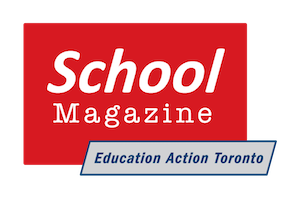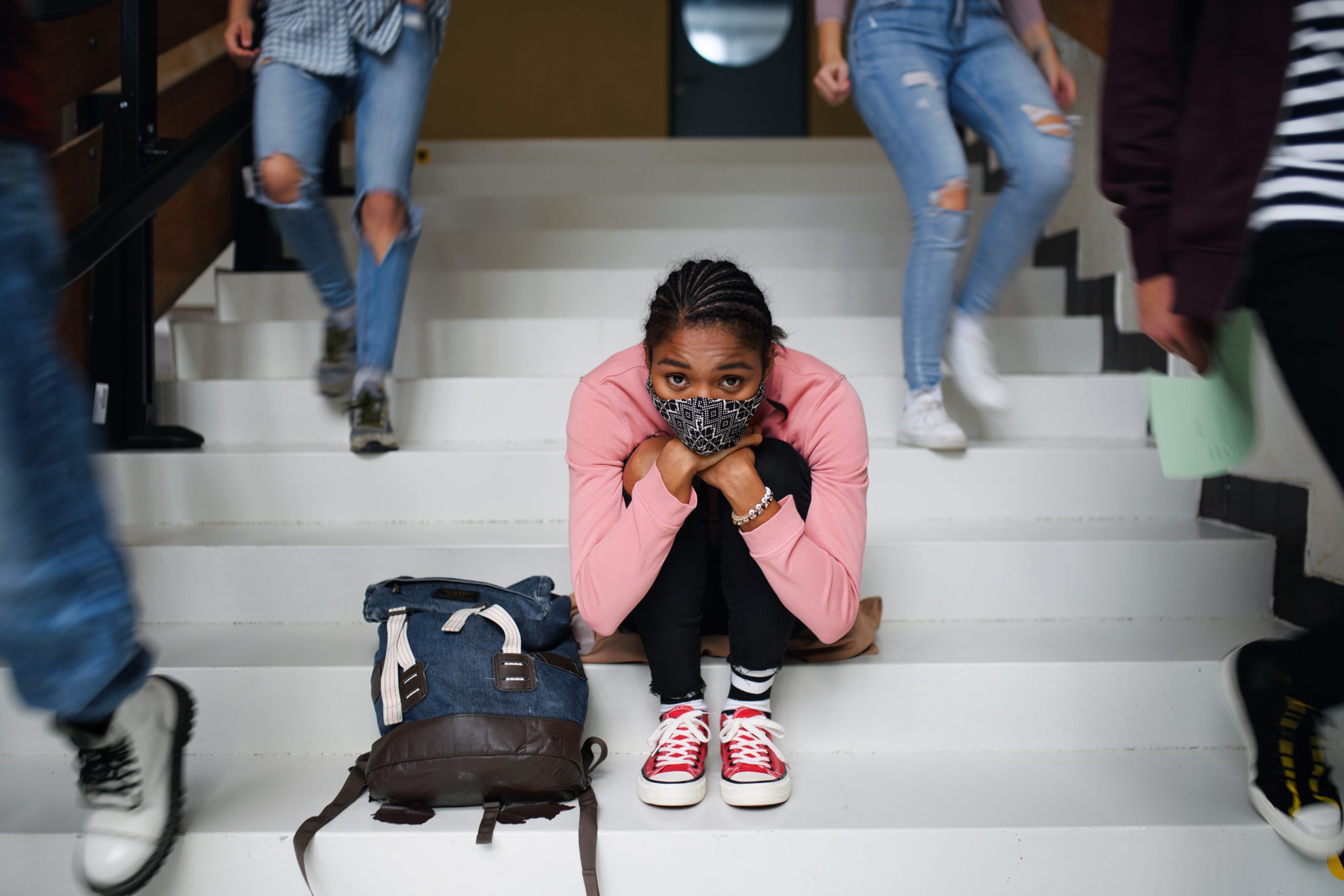Schools, austerity & privatization in the pandemic era
The Ontario Teachers’ Federation (OTF) yesterday released two research reports, which it funded wholly or in part, that document the impact on student learning caused by virtual learning and the Ontario Government’s underfunding of publicly funded education during the pandemic. School is pleased to publish sections of one of the reports, “Schools, Austerity & Privatization in the Pandemic Era” by author, Dr. Paul Bocking:
“Insufficient government funding led to elementary schools with untenable class sizes, quad and octomesters in high schools that increased learning gaps, long periods of virtual learning, and more ‘disastrous’ hybrid learning in both elementary and high schools.”
As we head to the polls on Thursday, let’s bear in mind yet another aspect of the assault on education perpetrated by the Ford government.
Executive Summary
When the coronavirus arrived in Ontario in the winter of 2020, the province’s K-12 education system was already in a state of profound turmoil. Soon after its election in June 2018, the Progressive Conservative (PC) Party led by Premier Doug Ford, made known its intention to impose sweeping forms of fiscal austerity across the public sector and pursue opportunities for privatization. These priorities were applied to K-12 education in the subsequent provincial budget, with measures released in March 2019 including class size increases for Grades 4 through 12, the elimination of a $235 million Special Education fund and mandatory e-learning for secondary students. The government subsequently signalled that Full Day Kindergarten might be rolled back. The class size increases alone, scheduled to be phased in over three years, were projected to eliminate ten thousand teaching positions, while greatly reducing the course offerings of schools. Despite the PC Government’s insistence that class sizes didn’t really matter, private schools launched advertising campaigns emphasizing their low student to teacher ratios.
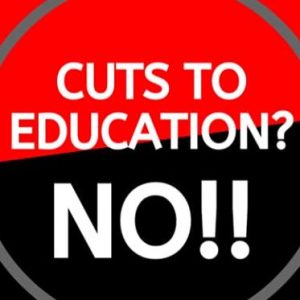 The announcement of the cuts coincided with the beginning of collective bargaining for Ontario’s over two hundred thousand teachers and support staff, affiliated with five unions and employed in the province’s nearly five thousand elementary and secondary schools within the Anglophone public, Anglophone Catholic, French public and Catholic school systems. Amid campaigns that successfully merged public support with collective bargaining, culminating in rotating strikes over December 2019 to March 2020, the Special Education fund and Full Day Kindergarten were protected, class size increases were mostly though not entirely rolled back, and e-learning was reduced from four to two courses with opt out provisions added. Then the pandemic came, and the coalitions that were successfully resisting the Ford Government’s cuts to education largely unraveled amid the urgencies and disruptions of the public health emergency. In the drastically changed landscape from March 2020 to the end of the school year, educators and families strived to make do as best as possible with emergency remote learning at a time of profound societal disruption.
The announcement of the cuts coincided with the beginning of collective bargaining for Ontario’s over two hundred thousand teachers and support staff, affiliated with five unions and employed in the province’s nearly five thousand elementary and secondary schools within the Anglophone public, Anglophone Catholic, French public and Catholic school systems. Amid campaigns that successfully merged public support with collective bargaining, culminating in rotating strikes over December 2019 to March 2020, the Special Education fund and Full Day Kindergarten were protected, class size increases were mostly though not entirely rolled back, and e-learning was reduced from four to two courses with opt out provisions added. Then the pandemic came, and the coalitions that were successfully resisting the Ford Government’s cuts to education largely unraveled amid the urgencies and disruptions of the public health emergency. In the drastically changed landscape from March 2020 to the end of the school year, educators and families strived to make do as best as possible with emergency remote learning at a time of profound societal disruption.
This report examines what occurred in Ontario’s education system in the successive two and a half school years, during which time the pandemic raged across the world. The report is divided into three main sections: Section 1 assesses the government’s funding of health and safety measures in schools during the pandemic, untangling the ambiguities that arose during the 2019-20, 2020-21 and 2021-22 school years over the respective financial contributions of the Federal and Provincial Government. Overall, the most significant contribution came from the Federal Government, despite K-12 education being a provincial responsibility. Funding was used to make structural improvements to ventilation in some schools, but not to the scale or degree often claimed by the Provincial Government, particularly in the context of a long-term repair backlog that reached $16.8 billion in the 2020-21 school year. Reliance was placed on portable classroom HEPA filters and masking, and the Provincial Government resisted acknowledging the full extent that the coronavirus (especially later variants) was transmissible by air. Meanwhile more costly expenditures on staffing, particularly to reduce class sizes for physical distancing and to operate parallel virtual schools, remained insufficient, uneven across the province and fleeting, being largely rolled back by the start of the 2021-22 school year. Within this context, educators, the teachers’ federations and concerned public responded with a range of approaches including legal challenges, protests and in a few cases, work refusals at schools during pervasive outbreaks. The Ford Government responded by publicly attacking its critics, whether they be doctors, scientists, union leaders or educators.
In Section 2, this report considers the profound restructuring of teachers’ work that has occurred during the pandemic. During the initial ‘emergency remote learning’ phase from March to June 2020, many students struggled with the disruptions caused by shifting to remote learning, and the ensuing lack of many necessary in-school supports. Academic learning was strained, but more profoundly affected was student mental health, and often, by extension, that of their parents. Teachers within this context grappled with both adapting their pedagogy wholesale to work within a remote learning format, and providing the supports that students needed, amid both top-down directives from the Provincial Government made without consultation, on issues including weekly minutes of synchronous instruction and final grades, and the many new issues for which no guidance was offered and teachers largely relied on the support of their colleagues to improvise.
The nature of teachers’ work continued to be transformed during the 2020-21 and 2021-22 school years, with the implementation of measures intended to reduce the risk of contagion, including cohorting, various sanitary measures, and quad/octomesters. These measures required a major reworking of teaching practices to accommodate longer classes, the delay of prep time for months at a time, and the imperative of covering content to prepare students for EQAO standardized tests while spending more time on health and safety measures. Hybrid/fractured learning, in which a teacher is responsible for instructing students both in-person and online at the same time, became pervasive in intermediate and secondary grades across the province, and in some boards even in at the primary and junior level, with the expiration of temporary funding for extra teachers in 2021-22. The hybrid approach has profoundly intensified teachers’ work and general stress, while shortchanging both groups of students due to the teachers’ divided attention. It is widely opposed by teachers’ federations as an unfeasible, unsustainable and pedagogically unsound model. Similarly, parents have witnessed how it degrades teaching and learning. Nevertheless, many educators fear that the cost savings it offers amid the entrenchment of e-learning, mean that it may outlast the pandemic. Among teachers, many of the measures addressed here have had a particularly heavy effect on the newest educators. These include the disruption of regular access to professional development and informal mentoring by more experienced colleagues, and the role of new and occasional teachers in accommodating rapid expansions and contractions of school board staffing depending on shifts in funding, resulting in precarious employment. It also coincides with concurrent Ford Government policies not directly related to the pandemic, including the replacement of Regulation 274, which provided a transparent qualifications and seniority-based hiring system with one where administrators again have more power and discretion.
Section 3 explores how the Ford Government’s policies during the pandemic have accelerated the privatization agenda in education. The expansion of e-learning, as a result of the pandemic, as well as the government’s directive that high school students must take some courses online in order to graduate, and a trend towards the development of comprehensive online course packs for all grade levels, coincided with the provincial directive that administrative responsibility for e-learning be centralized from school districts to public broadcasters TVO and its French-language counterpart, TFO. This measure has opened up a broad scope for potential privatization, including the contracting out of the design and delivery of some courses, and the mandate given by the Ford Government for TVO/TFO to commercialize and market these courses outside Ontario. Cash payments of hundreds of dollars made by the Provincial Government to the parents of K-12 students during periods of remote learning in the 2020-21 school year under the rationale of subsidizing family expenses in purchasing computers, had the immediate effect of diverting $1.8 billion from school funding. It may also have helped subsidize private schooling options, which have proliferated during the pandemic among families that can afford them. In the long term, these payments may serve to prepare for public consent for a future more direct form of school vouchers. Finally, while the digitization of education, including the structuring of the schooling experience through the medium of computers, and “platformization” via learning management systems including Google Classroom and Brightspace, has been developing for the past several years, this trend was inexorably accelerated during the remote learning periods of the pandemic. It appears to be entrenched even during subsequent periods of in-person learning. As this hardware and software is nearly exclusively provided by for-profit ed tech firms, including some of the most powerful corporations in the world, the result has been a profound advance in the corporatization of education. However, as with many of the policies and practices discussed in this report, this trajectory is neither natural nor inevitable, but the result of particular political decisions and priorities. It is possible to imagine and create alternative policies that prioritize the public good over private profit, and that rather than undermining teacher professionalism and intensifying their work, can renew the profession and public education as a whole, as it confronts the challenges of the third decade of the 21st Century.
Key Findings
This report traces how K-12 education in Ontario underwent a profound transformation during the coronavirus pandemic, due to the impact of the disease, and the policies and priorities of the Progressive Conservative (PC) Government of Premier Doug Ford during this period. Despite the unprecedented historic, political, economic and social implications of the coronavirus pandemic, and the active interventions required to contain it, there were significant continuities from the Ford Government’s pre-pandemic K-12 education policies. They imposed fiscal austerity and promoted privatization while maintaining an adversarial and partisan posture towards critics, and particularly the teachers’ federations. Together, fiscal austerity and forms of privatization are often referred to as the neoliberalization of education, for their diminishment of the public sphere and the common good, and the elevation of profit-making and competition at all costs.
Public Education Funding 2020-2022
1. The Provincial Government abandoned its initial well-funded plan to confront the pandemic in K-12 schools, which could have prevented or significantly reduced infections leading to school closures.
An investigative report by the Toronto Star detailed the initial Ontario Ministry of Education plan to confront the pandemic as schools re-opened in September 2020. It mandated frequent asymptomatic “surveillance testing” on a large scale and investment in expanding laboratory capacity; included considerable increases in funding to school boards to ensure elementary and secondary classes were capped at 15 students (recommended by epidemiologists as the optimal number to enable adequate physical distancing of two meters); and considered the cost of additional teachers and staff, and space limitations. The plan was never implemented.
The official back-to-school plan addressed school-site safety protocols and the provision of PPE, but largely avoided measures to reduce class sizes – measures recommended by the Toronto Hospital for SickKids. Scientists, medical experts and school board chairs interviewed in January 2021 argued that the initial plan could have prevented or reduced infections leading to school closures in 2020.
2. The largest effect of limited provincial funding, most of which came from the Federal Government and school board reserve funds, was the failure to reduce class sizes.
 The government touted total investments at the start of the 2020-2021 school year of $1.3 billion. However less than a third of this money was ever actually provided by the province, with $381 million coming from the Federal Government and $496 million in “unlocked funds” from permitting school districts to draw more money from their reserve funds for day-to-day operations. If a board had reserves, it was typically used for capital projects including building new schools or renovating existing ones. The single largest effect of limited new funding was the inability of school districts to reduce the size of most elementary classes, and a reliance on cohorting to do so in secondary classes. A $30 million fund, sufficient to hire only 300 new teachers, was created for the entire province of 4,444 public and Catholic schools serving nearly two million students. The $655 million spent by school boards on hiring more staff (nearly half from the Boards’ own reserves), amounted to an average of 1.5 staff members or fewer than one teacher, when spread across Ontario’s schools.
The government touted total investments at the start of the 2020-2021 school year of $1.3 billion. However less than a third of this money was ever actually provided by the province, with $381 million coming from the Federal Government and $496 million in “unlocked funds” from permitting school districts to draw more money from their reserve funds for day-to-day operations. If a board had reserves, it was typically used for capital projects including building new schools or renovating existing ones. The single largest effect of limited new funding was the inability of school districts to reduce the size of most elementary classes, and a reliance on cohorting to do so in secondary classes. A $30 million fund, sufficient to hire only 300 new teachers, was created for the entire province of 4,444 public and Catholic schools serving nearly two million students. The $655 million spent by school boards on hiring more staff (nearly half from the Boards’ own reserves), amounted to an average of 1.5 staff members or fewer than one teacher, when spread across Ontario’s schools.
3. The Ontario Government’s roll-back of education spending in the 2021-22 school year had significant consequences for health and safety, and student learning gaps.
The previous year’s funding increase in K-12 funding was quietly scaled back for the 2021-22 school year. More costly expenditures on staffing, particularly to reduce class sizes for physical distancing and to operate parallel virtual schools, remained insufficient, uneven across the province and fleeting. This led to widespread hybrid/fractured learning and large classes (particularly in elementary schools), making both physical distancing, and learning extremely difficult. It also exacerbated the challenge for teachers of diagnosing and addressing the learning gaps experienced by students during prolonged school closures.
Within this context, educators, the teachers’ federations and concerned public responded with a range of approaches including legal challenges, protests and work refusals at schools during pervasive outbreaks. The Ford Government responded by publicly attacking its critics, whether they be doctors, scientists, union leaders or educators. Educators and parents could be forgiven for feeling like they were being gaslighted by a government that insisted Ontario’s schools were better resourced than ever before, while class sizes saw no improvement and student access remained inadequate to educational assistants, child/youth workers, psychologists, social workers and many other vital professionals.
Health and Safety
4. The Ford Government lacked data to back its claim that schools do not spread COVID, putting students, educators and staff at repeated risk.
Throughout the pandemic, the Ford Government strove to persuade Ontario citizens that all reasonable measures had been taken to ensure Ontario’s schools were safe while publicly assailing scientists, doctors, union leaders and activists who said otherwise. The extent of COVID-19 transmission in schools was critical to determining measures required to make schools safer, and if or when individual classrooms, schools, districts or the entire system needed to move online.
A detailed analysis of provincial documents obtained through a Freedom of Information request by the Toronto Star and published in June 2021, revealed that the government lacked the data to definitively back its claim that schools do not spread COVID-19. Policy makers were unsure, even following briefings by scientists. A major reason was the lack of large-scale, asymptomatic testing in schools.
Government claims on investments made in asymptomatic testing also appeared to be inaccurate. In fall 2021, elementary schools had become the leading site for outbreaks, at a rate three times higher than other workplaces. In these circumstances, where provincially organized asymptomatic testing in schools remained very limited, parent activists and educators organized themselves to procure thousands of tests for local schools from non-profit providers. Within days, the Provincial Government intervened to block them, and subsequently announced an expansion of rapid testing at schools in high-risk areas
5. Ontario Government expenditures on school ventilation were inadequate
 In the face of growing public criticism over its 2020-21 return-to-school plan, the Ontario Government had announced a $50 million fund to improve school ventilation. While vital and overdue improvements to ventilation were carried out in some schools and portable HEPA filters were placed in many classrooms, not all schools that needed them benefited from more costly structural retrofits.
In the face of growing public criticism over its 2020-21 return-to-school plan, the Ontario Government had announced a $50 million fund to improve school ventilation. While vital and overdue improvements to ventilation were carried out in some schools and portable HEPA filters were placed in many classrooms, not all schools that needed them benefited from more costly structural retrofits.
In fall 2021, the Ministry of Education announced that the government had distributed 70,000 portable HEPA ventilation units for districts to place in classrooms, and implemented 2,000 structural ventilation improvements. In response to the latter assertion, local teacher leaders in the Greater Toronto Area (GTA), central and southwest Ontario stated that spending on improving ventilation in their districts went towards more frequent changing of filters and increased monitoring of overall building systems. Testing of classroom air exchange rates was very limited, due to the time and specialized equipment required. There were very few actual changes to the physical structure of ventilation systems – no air handlers upgraded to a larger capacity, no added ductwork, and no new vents installed in classrooms.
Impacts on Teaching and Learning
6. Ford Government Policies for in-class, virtual and hybrid classes created considerable learning gaps for many students, and burnout for teachers.
Both elementary and secondary teachers widely expressed concern that the long periods of online learning, especially from March to June 2020 and April to June 2021, left considerable learning gaps for many students unable to fully engage with the mode of online learning. This was particularly so for those who were racialized, whose parents worked in precarious jobs, and/ or who had special needs. Across the province, lower income and racialized students tended to disproportionately opt for virtual instruction, while students from white and more affluent families tended to remain in-person.
The demands of in-class, virtual and hybrid teaching exacerbated teachers’ efforts to address learning gaps for students. Measures intended to reduce the spread of the coronavirus, including new health and safety routines, cohorting and, in high schools quad/octomesters, created profound challenges for teaching, including the loss of preparation time. Many elementary teachers in particular struggled with the physical constraints of their classrooms and the numbers of students to maintain physical distancing.
Through the decision-making of the Provincial Government and many school districts, the capacity of teachers for professional judgment was consistently overlooked due to the top-down in implementation of policy. Along with a lack of clear, consistent direction in other policies which created stress, teacher input on solutions for improved teaching and learning conditions was ignored. The stress and tendency towards burnout experienced by many teachers intensified in fall 2021 in school districts that replaced temporary virtual schools with hybrid learning.
7. Lack of Provincial Government funding was a major factor in the prevalence of hybrid learning, described by principals as “a disaster”.
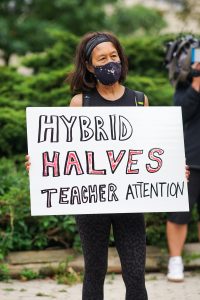 Hybrid learning considerably intensifies teachers’ work by requiring them to simultaneously engage with the group of students physically present in the classroom, as well as individual students viewing the class via video on a computer. This constrained the pedagogical choices teachers could make, often forcing them into a more rote, teacher-centric format resembling a large lecture class in a university— a model ill-suited for most students.
Hybrid learning considerably intensifies teachers’ work by requiring them to simultaneously engage with the group of students physically present in the classroom, as well as individual students viewing the class via video on a computer. This constrained the pedagogical choices teachers could make, often forcing them into a more rote, teacher-centric format resembling a large lecture class in a university— a model ill-suited for most students.
When most school districts decided not to continue running central virtual schools in 2021-22 in the absence of pandemic funding that was available in the prior year, they turned to hybrid instruction, with negative consequences. According to a 2022 survey of principals by People for Education, the proportion of elementary schools offering hybrid instruction rose from 11 percent in 2020-21 to 27 percent in 2021-22, while the number of secondary schools declined slightly from 50 to 47 percent.
The survey found most principals were concerned that hybrid was less effective pedagogically; observing declining student engagement and rising teacher and administrator stress. They described hybrid as “a disaster” and “the most difficult task assigned to teachers to date.”
Privatization of Public Education
8. The Ontario Government’s decision to move e-learning courses from School Boards to TVO/TFO will put a commercial rather than pedagogical focus on learning and has no rational basis.
In July 2020, the Ford Government amended legislation to expand the mandate of TVO and TFO to include the development and provisioning of online K-12 courses. This would supplant long-standing e-learning systems and consortia operated by school districts and their teachers. Stoking greater fears of privatization, TVO/TFO have been further mandated, at the behest of the Provincial Government, to market e-learning courses under a “global development strategy” to private schools within Ontario as well as to overseas markets as a revenue generator. It appears these public broadcasters are endeavoring to adopt a self-funding business model.
The Ontario Public School Boards’ Association (OPSBA) stated there was no rationale for TVO/TFO being granted control over e-learning where “outsourcing e-learning” could lead to its privatization and a commercial, rather than a pedagogical focus. It argued that the existing consortia already ensured students had access to effective high quality e-learning due in great part to being thoroughly integrated into the operations of individual districts, ensuring students are fully supported by their local teachers, who in turn help develop the online resources.
A massive funding increase would apparently be required to expand TVO and TFO to coordinate e-learning across the province and provide many more asynchronous courses. Yet TVO had already faced scrutiny and evidence of lower functionality when a school board outsourced its ‘virtual school’ for Grade 11 and 12 students in the 2020-21 school year to TVO with negative results.
9. Ontario Government cash payments to parents could set a precedent for private school vouchers.
In January and March, 2021, the Ford Government offered direct cash payments totalling $400 to parents of K-12 students or $500 for those with children with special needs. Its rationale was that these payments would offset additional educational costs incurred by families due to online learning. No conditions were attached to their usage and the vouchers were offered to all families, irrespective of financial need. A far more efficient means to serve the purported rationale of the payments would have been to allocate this funding to school districts for further large-scale purchases of digital devices at far better prices than individual families can secure, while also improving access to high-speed internet in rural areas.
To fund these payments, the government allocated $1.8 billion from the provincial K-12 education budget. School boards associations, unions, and many educators have expressed concerns that this diversion of funding will both worsen the shortfall of money available for schools. The Ontario Teachers’ Federation (OTF) identified the funds provided by the Provincial Government as being akin to “a voucher tryout” rather than a “leg up for families”. Vouchers could be a means to gradually overcome the historic unpopularity of public subsidies for private education in Ontario.
10. The “platformization” and digitization of education by ed tech companies have accelerated privatization within public education during the pandemic.
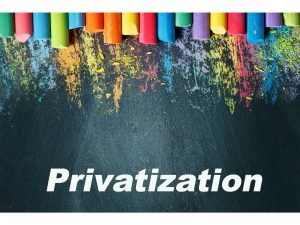 This has emerged, in part, from historic and ongoing decisions by Provincial Governments and education authorities to outsource the development of ed tech to for-profit companies, which have boomed during the pandemic. It appears the increased role for ed tech in education will outlast the pandemic. The principal question is whether this will prioritize the public interest or private profit.
This has emerged, in part, from historic and ongoing decisions by Provincial Governments and education authorities to outsource the development of ed tech to for-profit companies, which have boomed during the pandemic. It appears the increased role for ed tech in education will outlast the pandemic. The principal question is whether this will prioritize the public interest or private profit.
The re-centering of teaching around Learning Management System (LMS) platforms is both a form of privatization, and a potential threat to teachers’ professional autonomy. In practical terms, this can be seen in the shift from schooling that is centered on teachers delivering lessons in a specific physical location, within a set period of time, to posting live or pre-recorded lectures and activity modules online that can be viewed or completed at any time, from any place, by students. This decoupling of schooling from buildings and scheduled classes is reflected in the rationales promoted by the Ford Government for the expansion of mandatory e-learning.
Absent from optimistic futuristic prognostics are concerns about uneven access to required resources due to forms of systemic inequity, as well as the implications for the mental health and stress of both students and teachers arising from the de-structuring and open-endedness of schooling and teachers’ work. What does it mean for teachers to surrender their roles and expertise in teaching subjects through pedagogy, to become that of a “learning coach” and interpreter of digitally generated data, through more centralized systems? And what are the implications of these processes for student wellbeing in general, and those with special needs and/or from marginalized backgrounds in particular?
Recovery Strategies
11. Ontario needs education recovery strategies that address student learning gaps, value teachers’ voices, and create supportive non-profit ed tech.
A growing number of researchers and advocates have emphasized the need for properly funded “education recovery strategies” to address student learning gaps that are focused on the most disadvantaged students during the pandemic and carried out by public school boards, rather than left to individual parents who may or may not have the private means to do so. This may include intensive, high quality, small-group tutoring during and after the school day, and extra time and opportunities for teachers in different subjects and grade levels to compare notes on the needs of specific students. It certainly means more mental health supports for students, including more social workers, child and youth workers and counsellors and psychologists, as well as school outreach to community groups in marginalized constituencies. More than ever, the pandemic has also demonstrated the need for small class sizes.
Effectively addressing the root causes of rising levels of stress and burnout means confronting the various ways in which teachers’ work has been intensified during the pandemic. Meaningful solutions require a greater degree of teacher voice in the decision-making of school districts, and in the decisions of the Provincial Government, which ultimately controls K-12 education finance.
It is possible for ed tech to take K-12 education in a different direction that supports rather than undermines public schools, teachers and students. Instead of being outsourced to for-profit corporations, a non-profit entity could be bolstered by the combined resources and scale of Ontario’s school districts and Provincial Government to become a developer of the key tech platforms used by students and teachers. Rather than pursuing market share or harvestable user data, ed tech would be developed at scale, to complement and reinforce – not supplant – teachers’ expertise and professionalism. It would be a mechanism truly created with the interests of learners in mind, not profits.

You can read the rest of the report here.
Paul Bocking is a labour and education activist and teacher. He ran for Toronto City Council in 2014 and is author of the book Public Education, Neoliberalism and Teachers . He received his PHD from York University in 2018/.
